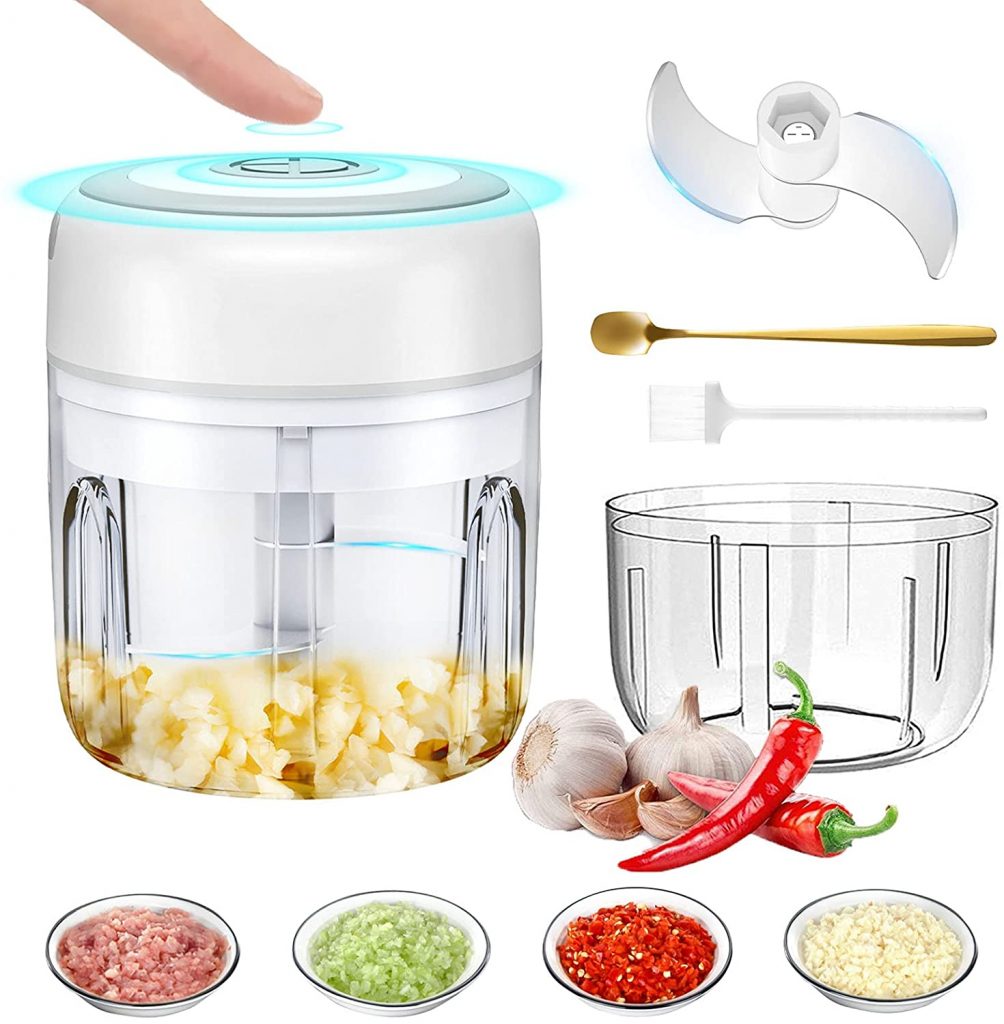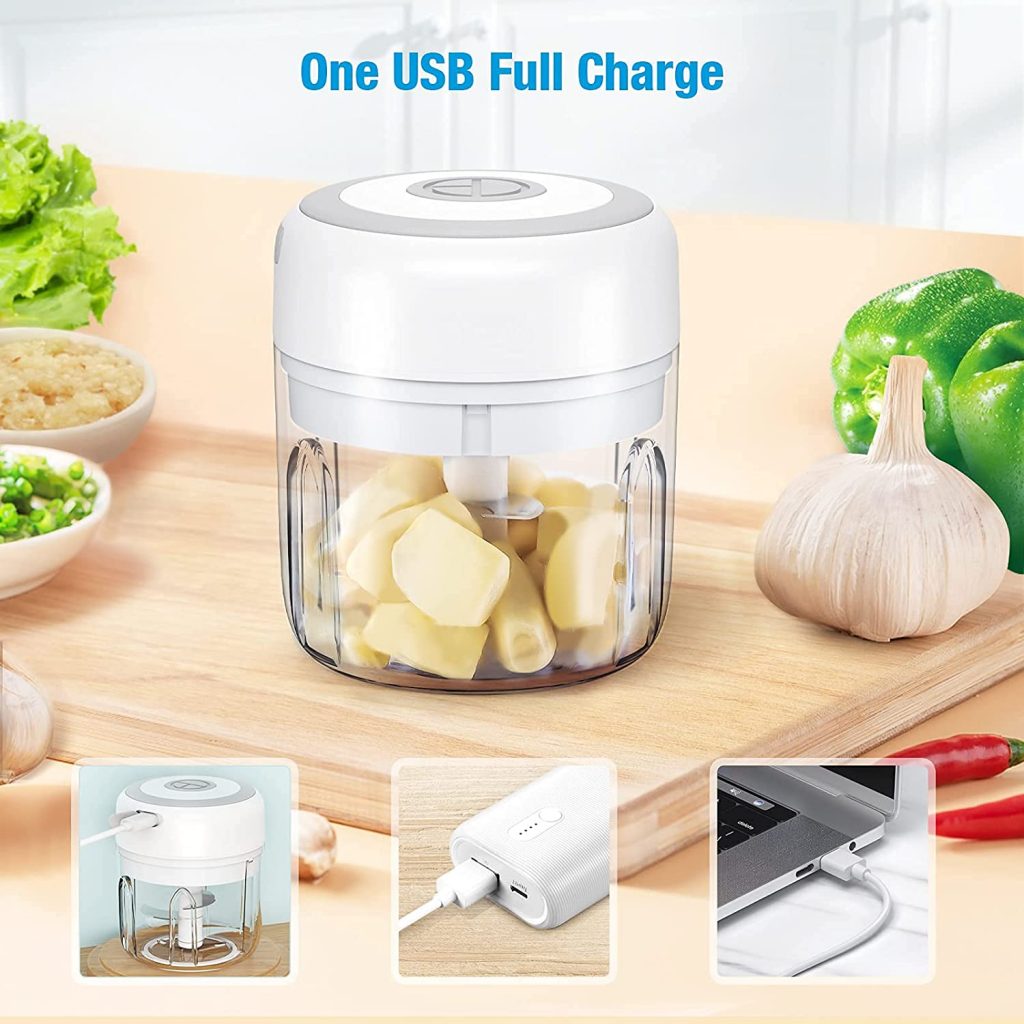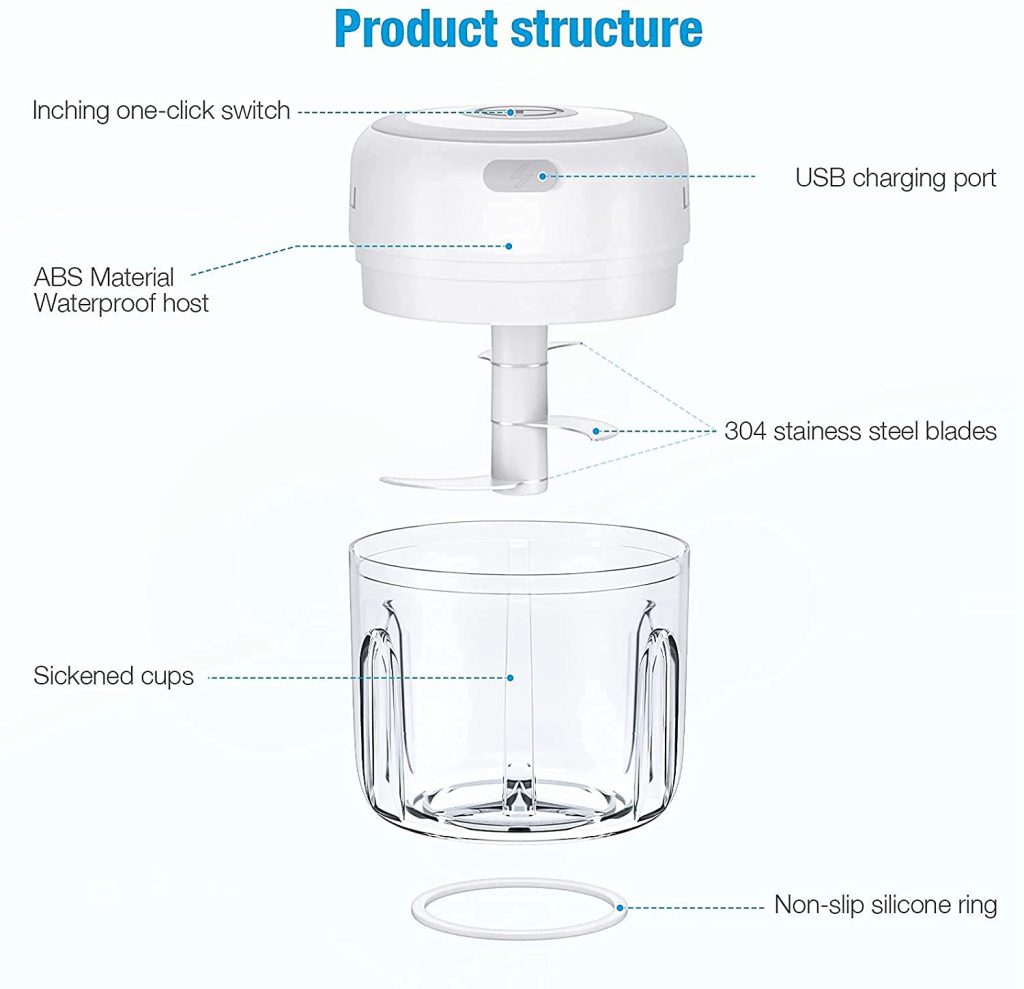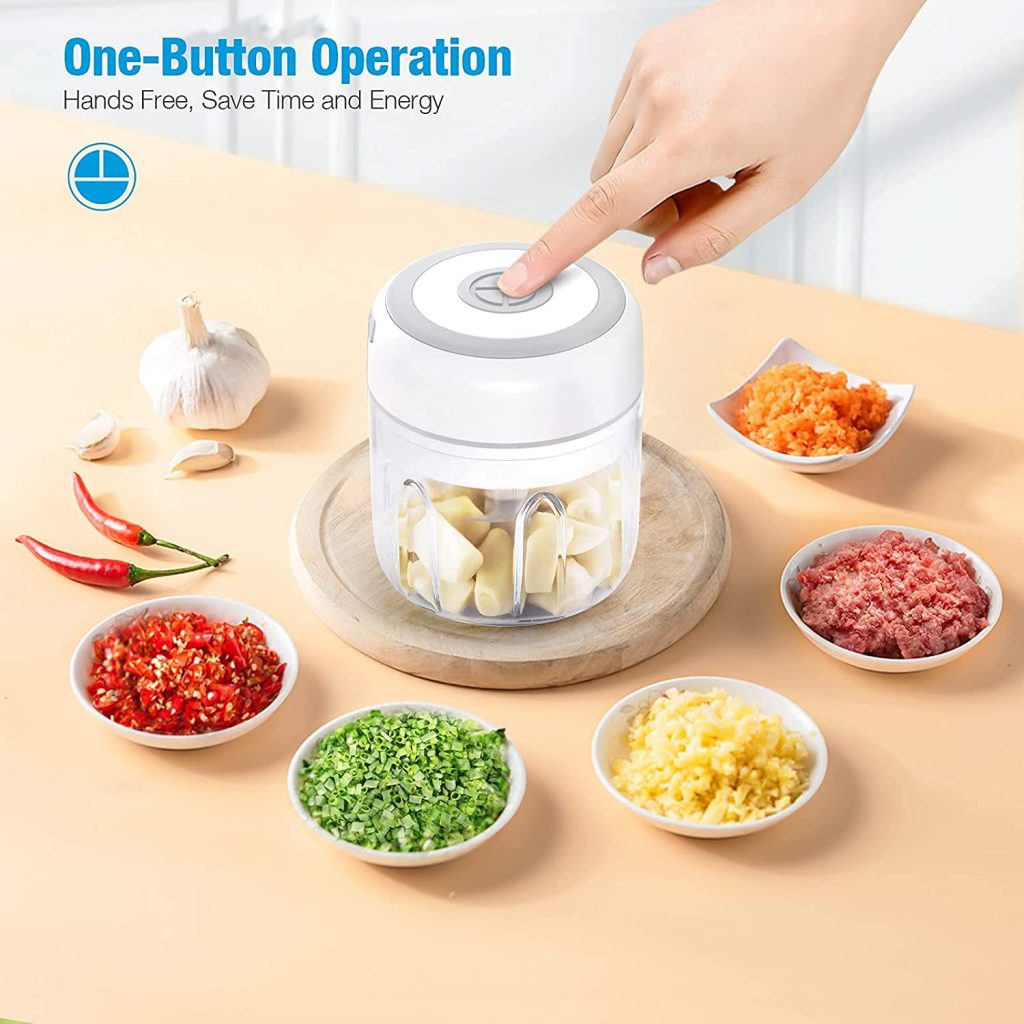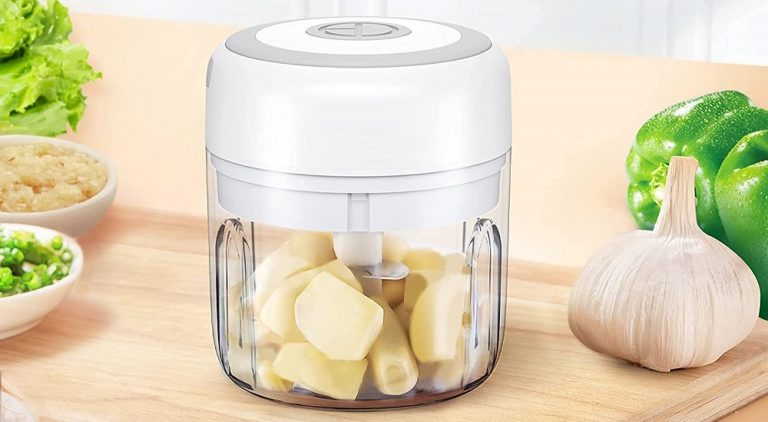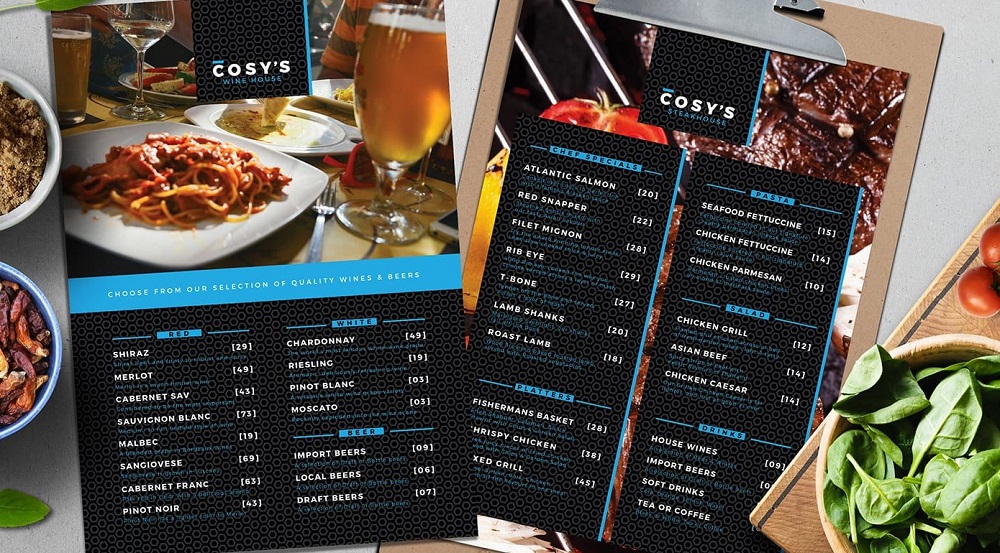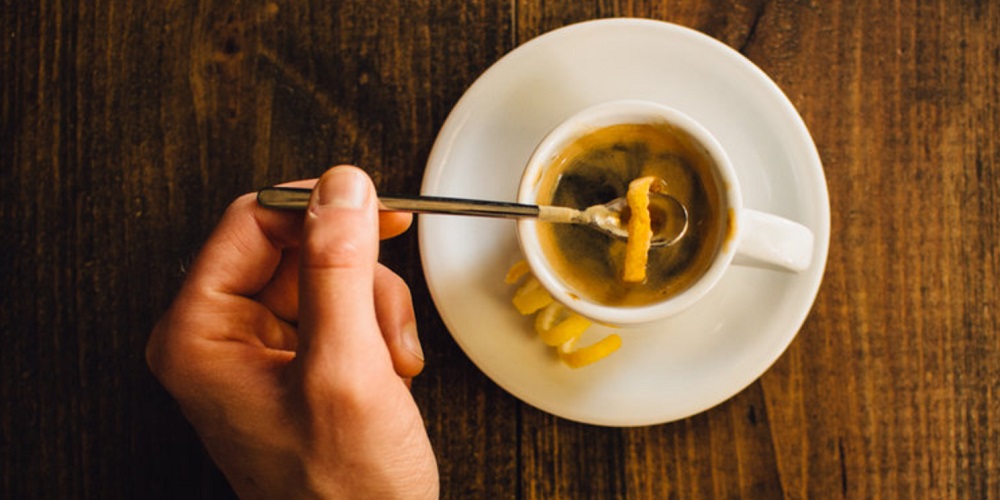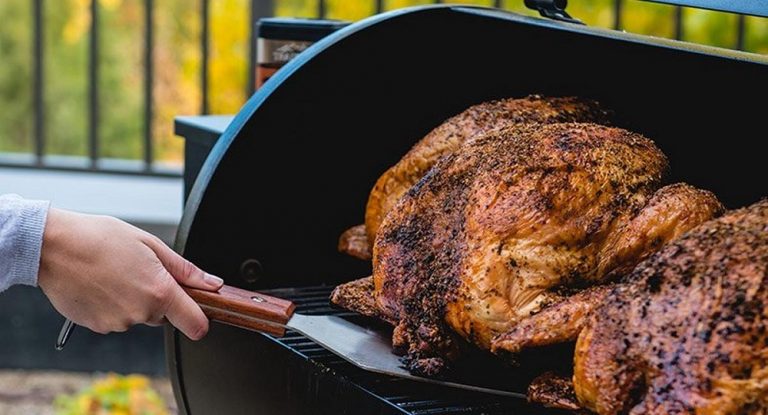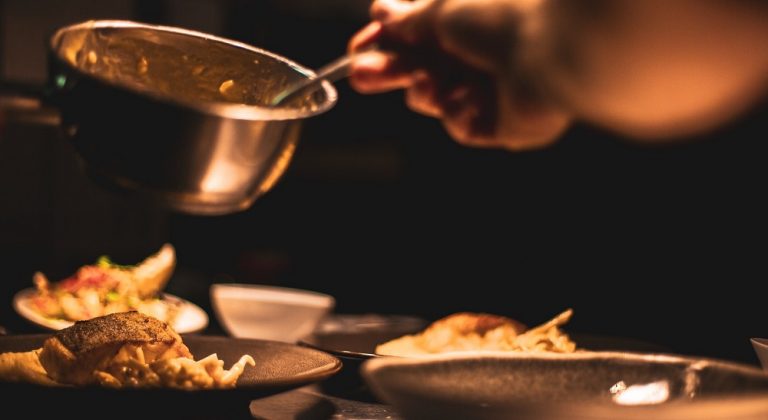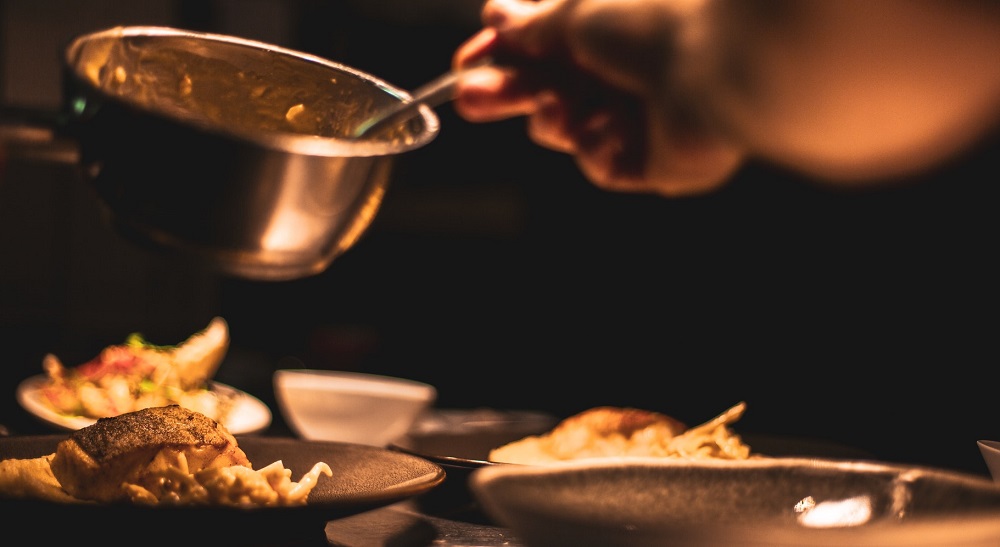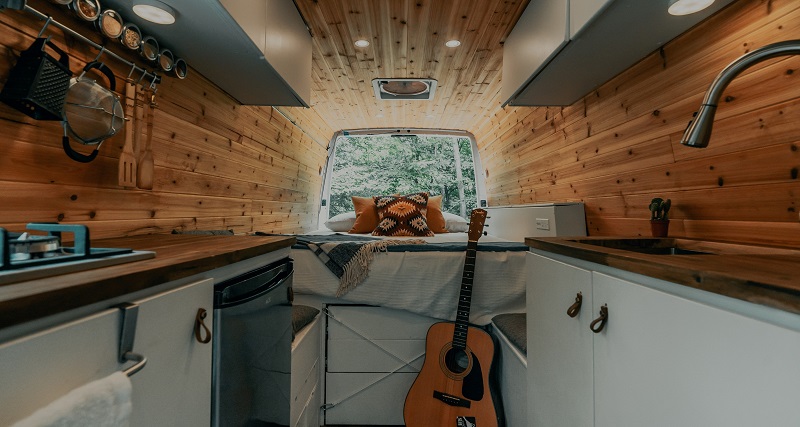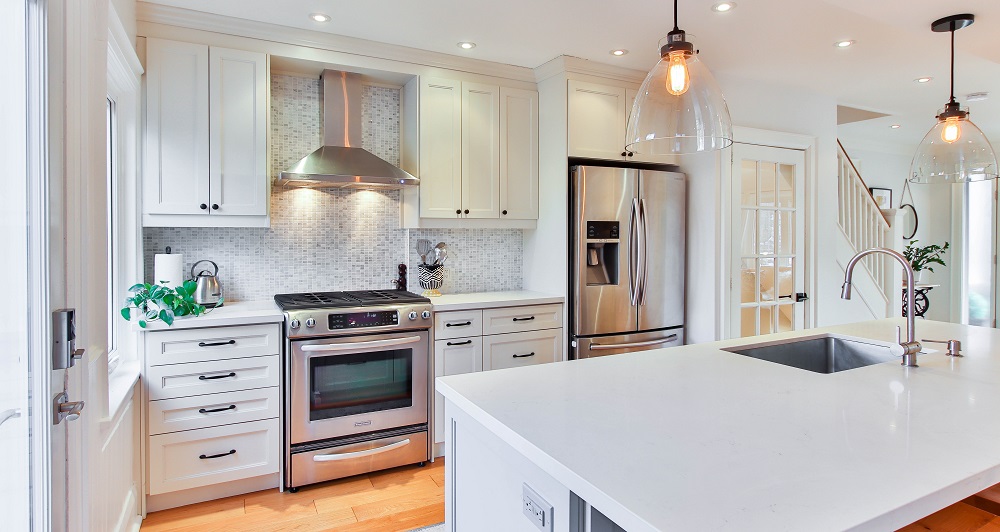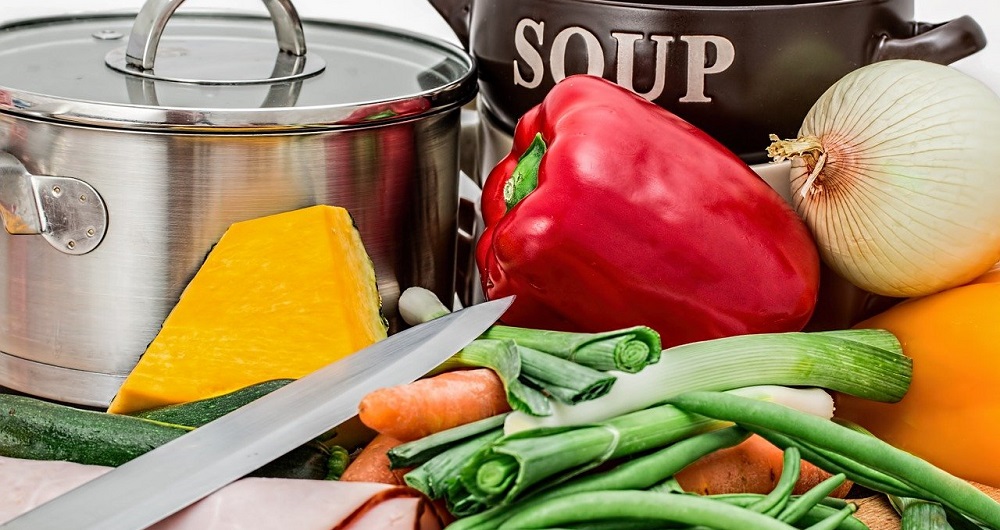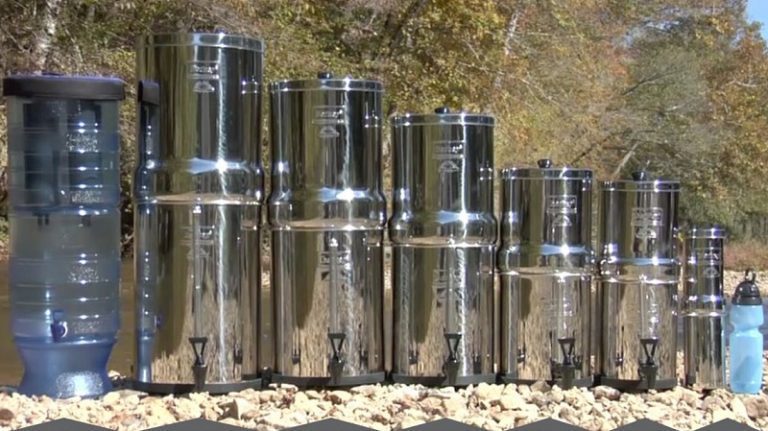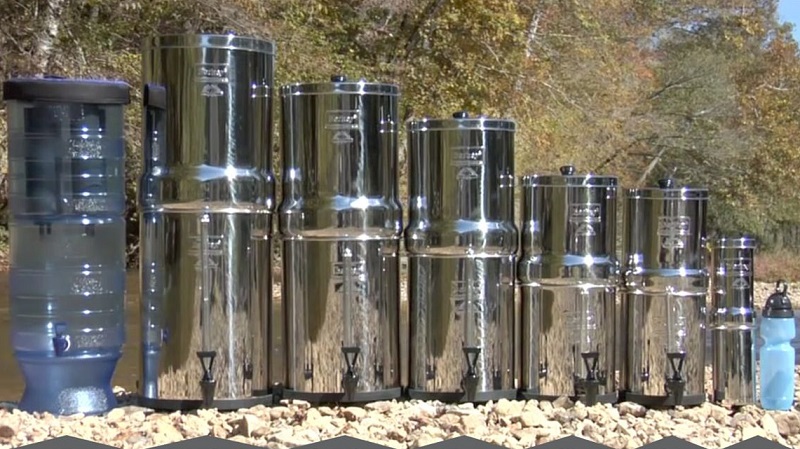A pellet grill is a device that combines all possible modes of cooking products: baking, cooking, frying, smoking, stewing, languishing. The peculiarity of the barbecue is not only in the multi-mode, but the very process of the device is also unusual. Pellet grills operate from the electric grid, while natural wood pellets – pellets serve as fuel. Working from the network makes it possible to control the temperature and cooking mode, and wood pellets will provide a smoky taste and aroma.
Wood pellets are made from various tree species (cherry, apple, mesquite, hickory), which makes it possible to choose the shade of the prepared products. Pellets are 100 % natural fuel and 99% burns during the operation of the grill, so we get a small amount of ash at the output. The consumption of pellets is small: for smoking for an hour, about 1 kg of pellets is needed, for cooking in high heat – 2 kg (4.5 pounds) per hour.
The first pellet grills worked at low temperatures (up to 230 °C / 446 °F), which made them suitable for smoking but unsuitable for cooking steaks on fire. But some manufacturers like Weber decided to turn the idea of pellet barbecues around by introducing models with a temperature range of 90–320°C (194–608°F).
The design of the pellet grill provides a special compartment for wood pellets. In the compartment, there is an auger that sends the pellets to the working area, where the fuel is burned and gives off heat.
Temperature control is carried out remotely. It is enough to install a special application. This option is convenient for long-term smoking: we fill the compartment with full pellets, set the temperature, and continuously smoke for up to 14 hours, looking at the application.

Advantages of pellet smokers:
- multi-mode
- temperature control
- remote control
- easy cleaning
- saving fuel consumption
The disadvantages include a relatively high price and the mandatory availability of power supply. Nevertheless, given the capabilities of the equipment and ease of operation, the disadvantages become insignificant.
The pellet smoker is more than the grill for connoisseurs of maximum flavor. Food in the smoker takes longer to cook than on the grill because of the lower smoking temperature. This allows the aroma of the spices and smoke to penetrate the food. Also, it is almost impossible to cook a large bird on a barbecue grill. A smoker is best suited for this. There are a large number of recipes for cooking turkey.
If you’re in doubt about choosing pellets as a fuel for cooking turkey, check out a good comparison review on the subject.
Tips on Choosing a Pellet Smoker for Turkey
There is a great variety of pellet smokers on the market. Let’s take a look at the main features of pellet smokers that will help you in the difficult choice of the ideal smoker for you. The first thing to look at is how big the cooking area should be. The next step is to determine the type of smoker. There are two types, horizontal, very similar to a standard grill, and vertical, or upright, a great option for small backyards or flat balconies. Then, it’s worth deciding whether or not you need a warming shelf. If you intend to cook a lot and for a large group, a warming shelf is necessary for your smoker.
Another important characteristic of your smoker is the capacity of the hopper. The larger the hopper capacity, the longer you will be able to cook. However, the possibility of adding pellets during cooking can solve the problem of a small hopper. Size, weight, and warranty are other important features. Pellet smokers are relatively high-tech. So, it’s worth thinking about non-obvious things like cord length if the model you choose requires a network connection, Wi-Fi support if you choose a model with a programmable schedule option, and an accurate and well-read thermostat.
The most important thing for us when making the list was the cooking area, which determines the amount of food cooked at a time. Equally important to us were the dimensions of the smoker. Then we checked for a grill to heat the food already cooked, this will ensure that all your guests get a hot meal.
Cost of Operation
In the frying mode, at a temperature of 250 °C (482 °F), pellet smokers usually consume about 1.4 kg (3 pounds) of pellets per hour. In the smoking mode, at a temperature of 135 °C (275 °F) – 700 grams (1.5 pounds) of pellets per hour, at a temperature of 80 °C (176 °F) about 400 grams (0.9 pounds).
So, compared to coal kinds of grills, pellet smokers are rather cheap and more expensive compared to gas grills. One of the main advantages of such smokehouses is their unforgettable smell.
Meat, fish, and vegetables cooked in a pellet smokehouse retain their taste for a long time and are remembered by a delicate aroma. In addition, they are very easy to use. You do not need to be constantly around; you can safely leave the turkey to smoke for several hours.
Recipe for Cooking Turkey in a Smoker
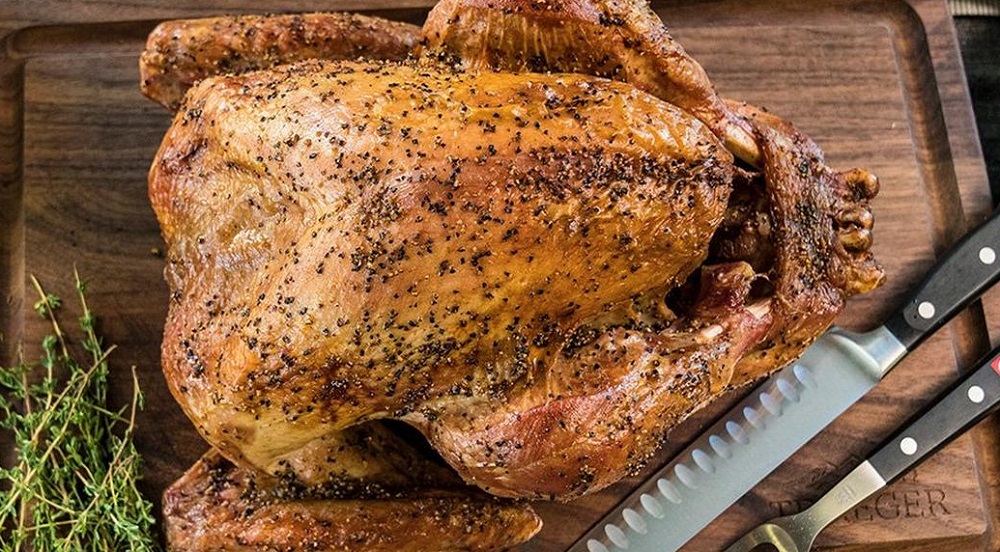
If Thanksgiving is approaching, then you will certainly want to try your pellet smoker to cook a turkey.
Turkey is a big bird, and if you don’t call a crowd of guests, then it can be difficult to manage (eat) it in one day. And smoked fish can lie in the refrigerator for a week or two, and it is very good in cold form, even better than in hot. Turkeys are often 8 kg (17.5 pounds) in weight. Below is a recipe for how to smoke such a large bird.
Step 1. Preparation
Cut off the long neck, the fingers of the wings, and the excess skin from under the neck. Put the turkey in a large container so that it completely enters there. Fill the turkey with cold water so that the water completely covers the bird. After that, pull the turkey out of the water and measure the amount of water in the container. You need to know this for a good pickle. Most likely, there will be 15 liters (4 gallons) of water for an 8 kg (17.5-pound) turkey.
Put 750 g (1.65 pounds) of salt and 500 g (1.1 pounds) of sugar in this water, stir. Immerse the turkey in this solution again. Please note: the turkey drowned in freshwater and surfaced in brine. That’s right! Place the container with the turkey floating in the brine in the refrigerator and keep it there for a week. Turn the bird over every day so that the part protruding on the surface of the saltwater is underwater.
Step 2. Smoking
After a week, remove the bird from the brine, wipe it with a towel, and put it on the grill to dry. It will dry out in five hours.
Pour 2/3 of the coals into the starter glass and light them with a crumpled newspaper slipped under the starter and set on fire. When the coals are heated, pour another full glass of coals on the grill for coals in the smokehouse, and pour hot coals on cold coals. In the water bowl, you can pour water or just pour the sand.
Place the turkey on the upper grill of the smokehouse. Close the system with a lid, cover the flaps almost to a minimum. When the temperature has normalized around 70 °C (158°F), throw a few pieces of a branch from a cherry on the coals. Leave the process for 18 hours.
Add coals from time to time. In the first 3–4 hours, you can put a few more cherry chunks. By night, the temperature outside may drop, so you can open a little room. The next morning, your turkey will be completely ready!
Step 3. Enjoy Your Turkey!
The meat thermometer stuck in the turkey breast should show 65–67 °C (149–153 °F). Remove the bird and let it cool down. After an hour, you can enjoy gently elastic, juicy, moderately salty, and magically fragrant meat.
There are so many different brands of pellet smokers on the market. It is not easy to choose the best one for you. Fortunately, here is an article that gives you a complete and comprehensive analysis of the best brands of pellet smokers.
Conclusion
Pellets and devices working on them are far from a fresh revolutionary breakthrough – they have existed for several decades. You can try this device if you follow the following conditions:
- If your goal is always to get the most fragrant result
- If you have an electrical outlet in the area where you plan to operate the grill.
- If the cost falls within your budget.
Pellets are wood, which means that a pellet grill can be considered wood-burning, but since it works from an outlet, it means, to some extent, electric. Very often, pellet smokers can both fry and smoke. When a pellet smoker is brought to the frying state in the same 10–15 minutes as a gas grill, and in the smoking mode, it is ready to work faster than a wood-burning grill and the cost of operation, with all the aroma, is cheaper than operating a coal grill.
